
'Classic' may be a much over-used epithet when it comes to rock climbs, often meaning different things to different people and offering plenty of opportunities for discussions on the subject. Classics can be ancient climbs sneaking up big bits of rock in a crafty way - think Eliminate 'A' (VS 4c) on Dow Crag, or Spiral Stairs (VD) on Dinas Cromlech. Or they can be typical of the style despite not being especially great to climb, Winking Crack (E3 5c) on Gogarth and Tower Chimney (E1 5b) on Stanage for example. Then there are the real classics that offer elegant climbing, often in dramatic settings, usually with good gear so you can enjoy the experience to the full, and maybe with a dash of historic interest - Troutdale Pinnacle (S) in Borrowdale, Main Wall (HS 4b) on Cryn Las and Vector (E2 5c) at Tremadog are all great examples of the genre.
Of course there are always those who will disagree as to any route's classic status, in some circles it is fashionable to knock these great climbs - but for many of us they give focus, create goals to plan towards, and define great days out when everything goes according to plan.
Metre for metre, gritstone has more than its fair share of classics often packed cheek by jowl, I wouldn't go so far as to say I haven't climbed a poor route on grit, but then again, there have been too few to mention. Eastern Grit in particular is blessed with a pantheon of fantastic climbs across the grades on a superb set of cliffs almost all of which have the advantage of facing the setting sun - ideal for local city dwellers escaping for an evening's sport.
So below are a list of 10 'classics' across the grades from the new Eastern Grit guide due out next month. We have chosen 10 different routes from 10 different grades on 10 different crags - though there is a slight cheat as we have one from Stanage Plantation and one from Stanage Popular. Variety is the spice of life - once you have done this selection there are another 4000 to go at, not all classics maybe, but all worth doing.
Crack and Cave (HVD 4a) HVD 4a - Stanage
Climb the awkward wide crack to the right edge of the cave then move right to finish up the face. Well protected but hard work.
FA. Eric Byne 1950
Grit isn't always the best medium to learn to climb on though many indoor climbers cut their teeth on the easier routes on the eastern gritstone edges. Crack and Cave illustrates the issues well at only HVDiff (what would that be indoors - maybe Grade 2?) it should be a romp, but the crack is wide and an awkward width whereas the wall above the cave has some very polished and sloping holds. Then there is the issue of the gear and protecting your progress - so maybe the transition from indoors to outdoors isn't so straightforward - but it is worth persevering with. Learn your new trade well and there is a whole world of great routes to go at.
Powder Monkey Parade (S 4b) S 4b - Birchen
From the chock move right onto the arete, swing round the corner (4b, but harder for the short who will have to dangle) then teeter out right and finish up the well-positioned slab. Nice.
FA. David Penlington 1951
Birchen is a very popular crag with groups, families and beginners - the reasons are obvious; lots of easier routes, a short approach and a lovely grassy base. This popularity has led to the glossing of holds on many of the routes, add in the fact that erosion has lowered the crag base in places, and this explains why many of the routes have a disproportionally tough start. Powder Monkey Parade is typical of this, the initial chockstones chimney is a torrid slippery struggle - once established you can enjoy the main meat of the route, a lovely traverse and final open slab.
Tower Face (HS 4b) HS 4b - Wharncliffe
The left-hand facet of the square buttress is split by a thin crack. Approach this via a short slab (awkward for the short and with poor protection), then climb it using the arete on the right as and when needed. A finish to the left extends the pleasure a bit.
FA. Eric Byne 1933
Wharncliffe, situated to the north of Sheffield, has been a bit of a neglected spot for years, though a hundred years ago it was the most popular crag in the area, courtesy of the nearby railway line. It sees a lot less visitors than the showcase cliffs in the Peak District but it does have some plus points, it dries very rapidly and is often in a bit of a rain shadow. There are many decent climbs scattered along the cliff, the majority of them put up in the dawn of our sport. Tower Face is a little beauty, elegant, well-positioned and very photogenic - a suitable return on the effort involved in visiting this rather different venue.
Sand Buttress (VS 4c) VS 4c - Black Rocks
Excellent steep climbing up the imposing buttress. Tackle the steepening crack left of the deep gully to its end then hand traverse out left to a ledge. Climb more steep cracks to another ledge then finish though the bulge directly above. A tougher finish is to traverse back to the right arete and finish up the awkward undercut groove there - HVS 5b.
FA. Fred Pigott 1920
The Black Rocks of Cromford are tucked away in the southern Peak, a tall, dark and rounded outcrop much of which unfortunately faces north, meaning it is only a fair weather venue. Like Wharncliffe, this is another crag that was popular way back and some of the first ascent dates make for impressive reading. Sand Buttress is a great route, swaggering up this tall imposing piece of rock. Double ropes and a stack of cams make it a reasonable undertaking - we can only guess how Fred Pigott felt after his adventurous first ascent almost 100 years ago.
Croton Oil (HVS 5a) HVS 5a - Rivelin
A great classic featuring fine climbing and good protection. At the lowest toe of the pinnacle, climb a wide crack (often damp) to ledges then the wall trending left via a series of finger-cracks (good wires). Finish up the rickety flake with care.
FA. Dick Brown (5 pegs) 1953. FFA. Pete Crew 1963
Rivelin is Sheffield's very own 'city crag' although it remains a bit of an enigma, an excellent set of routes on a scattered series of buttresses poking above the silver birch forest. The crag has become well known as a fair bet on clear winter days when its southerly aspect catches all the sun and it offers shelter from the north wind. The crag also has an extra attraction, its own rather grand pinnacle that sits in front of the central section of the cliff. The fact that the best route on the cliff should reach this mini-summit is a happy accident; the climbing is lovely too, elegant and balancy and with good gear along the way. The abseil escape is the icing on the cake, a rare experience on Eastern Grit.
The Left Unconquerable (E1 5b) E1 5b - Stanage
The leaning crack is jammed to a poor rest at the break. Build a bomb-shelter then make the crucial precarious layback moves up and left to reach a ladder of jugs. A great contender for your first grit E1, as this one won't be down-graded.
FA. Tom Probert 1949
Like many folks my first Extreme was Left Unconquerable, the feeling of euphoria having done the barn-door crux was magnificent, even pumped senseless I knew it was in the bag. Later we asked Don Morrison for a good second Extreme and he pointed us at Curbar's Right Eliminate. To this day I don't know whether he suggested it because he knew it had runners so we shouldn't get hurt, or to show us callow youths what 'real' Extremes were like - suffice to say we didn't make much progress on it!
Five Finger Exercise (E2 5c) E2 5c - Cratcliffe
A superb route up the right wall of the gully with a wild finale that trips many a suitor. Pull right over a narrow overlap and climb the wall on small sharp holds (looks harder than it is) then continue to ledges. Fill the horizontal break with runners then swing around the rib and power up the hanging flake. Only the weak are spurned, though the timid may have a hard time too.
FA. Andy Edgar 1976
Cratcliffe is the perfect bijou experience - there isn't much of it but how the quality glitters. Suicide Wall and the walls of Owl Gully are home to an astounding set of climbs. Five Finger Exercise forges a way up the right wall of the gully to a super-spectacular finale on a hanging flake. Though only short the flake is pumpy to access and to make progress on, the gear in the break will catch any fall but flight-time is a given if you run out of steam before the jugs - committing gritstone climbing at its very best.
Sentinel Crack (E3 5c) E3 5c - Chatsworth Edge
An awesome roof-crack; a desperate struggle for most. Climb an awkward groove to a poor rest and then undercut out left. The struggle to fist jam past the lip is memorable and will leave its mark one way or another. Once past the lip easy jamming remains, if you have any steam left. E2? I don't think so.
FA. Don Whillans 1959. Runnerless, or so the stories go!
Chatsworth is a bit of a one route crag - there are other worthwhile climbs here but if you aren't here to do Sentinel Crack you are avoiding the issue. From leaving the ground the whole route is off-balance, awkward to protect, with poor rests and an ever-present feeling that it would be easier to pack in and leave it for another day. Then there is the crux - the difficult moves required to pass the lip of the overhang: fist-jamming whilst hanging almost upside-down, quite an undertaking for 1959.
Profit of Doom (E4 6b) E4 6b - Curbar
The superb hanging groove in the arete is best approached directly up the steep and awkward crack below it, although those impatient individuals who can't wait to get at the main event, often climb the wall to the left. Gear in the back of the groove is hard to place (offsets?), especially for the short. Once suitably protected bridge-a-way to glory making suitable use of the left-hand arete. Many pre-place the gear in the groove on abseil which reduces the commitment and possibly the grade.
FA. John Allen 1975
What a line, a hanging groove in the sky, undercut and inaccessible with little in the way of useful holds. And what climbing - precarious and strenuous at the same time - a superb blend of delicacy and power are needed for success. Twenty-five years on I can still clearly recall one of my best ever days on the grit, leading Profit of Doom and Usurper in rapid succession plus a heap of lesser classics - Glory Days!
London Wall (E5 6a) E5 6a - Millstone
One of the finest finger-cracks in the country sees many attempts and many failures. The initial leaning fissure is as hard as anything on the route (feels like 6b ) although the leftwards traverse is also taxing. Above this steady climbing leads to a reasonable rest ledge before the breathtaking final crack where many attempts flounder. An essential E5 tick.
FAA. Trevor Peck 1956. FFA. John Allen 1975
I have to admit, I never got round to leading London Wall - it always proved to be just too hard - though I did follow it a couple of times and scrape my way up White Wall just next door on the sharp end. The line is breathtaking and the gear is bomber but many attempts flounder on the tough initial crack. Those who make it to the tiny rest ledge are faced with another stopper, the run-out upper crack which also sees its fair share of screamers. I once visited Millstone with a Scottish friend, and a very respectable climber; we had done the likes of Carnivore and The Needle together. We wandered into the quarry and on seeing London Wall which had only been free-climbed a couple of years earlier, he gravitated over to the base of it, fingering the initial crack and gazing up whilst shaking his head in disbelief
Logistics
Accommodation Advertise here
No Premier Listings found in this area
Instructor/Guides Advertise here
No Premier Listings found in this area
Outdoor Shops Advertise here
No Premier Listings found in this area
Climbing Walls Advertise here

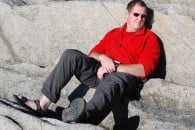

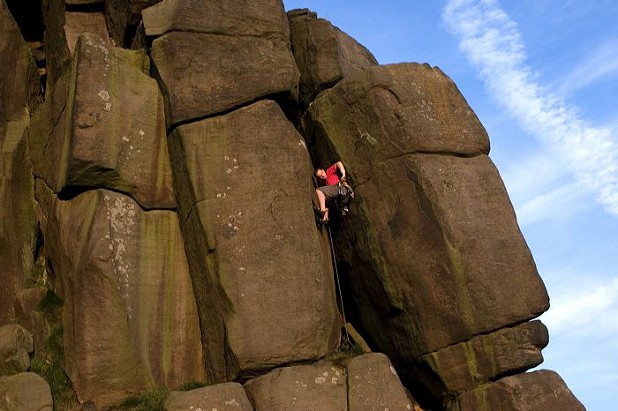
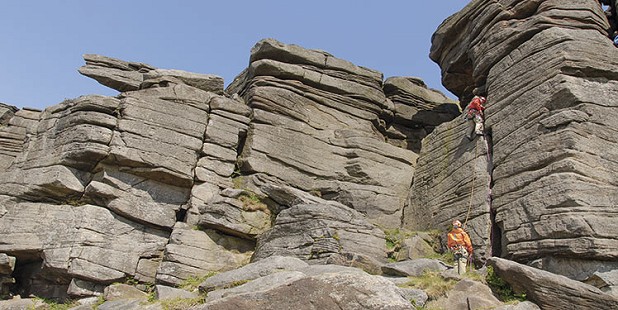
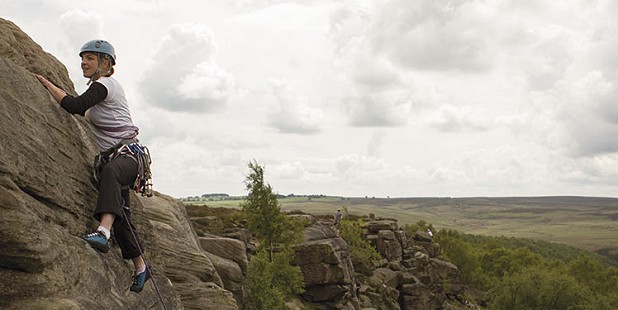
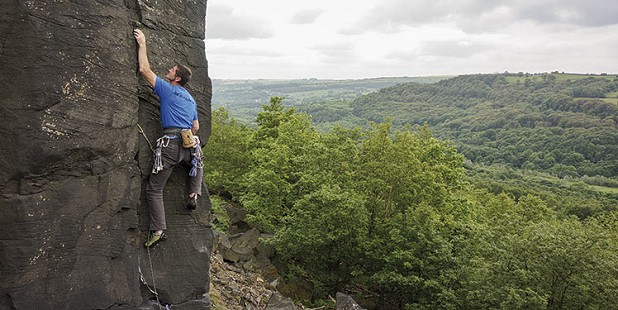


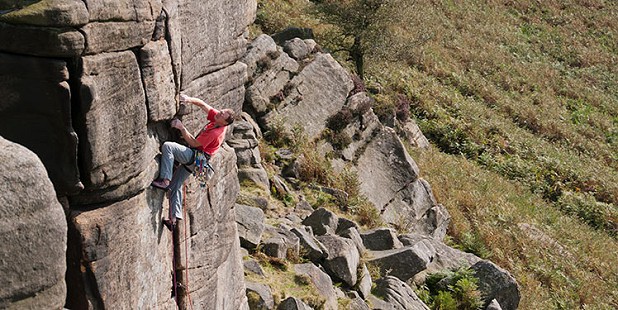

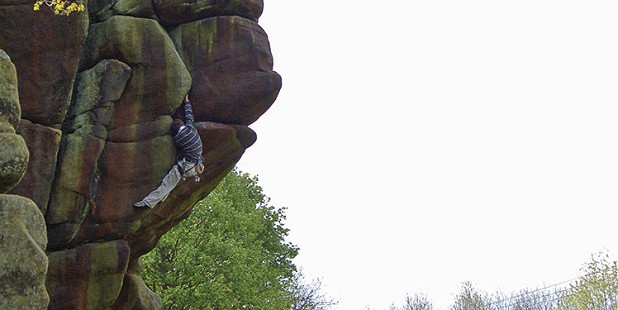
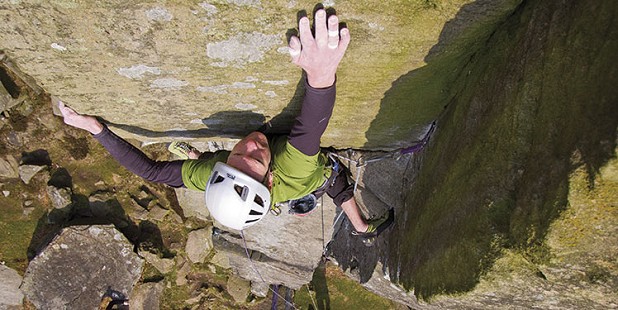
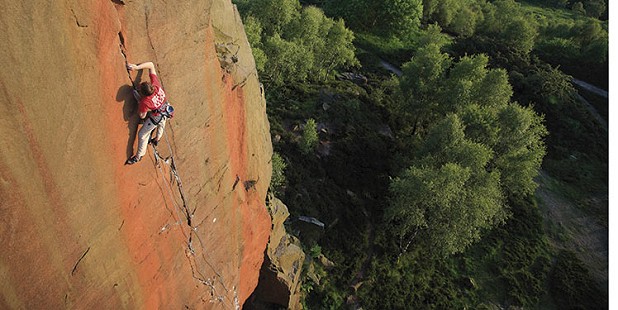

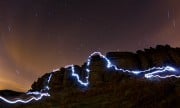

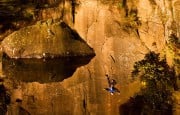
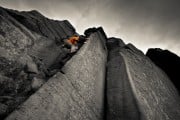












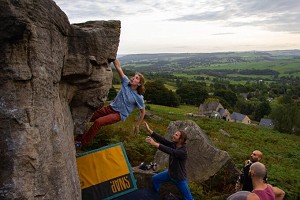
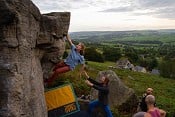
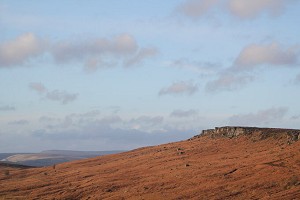




Comments